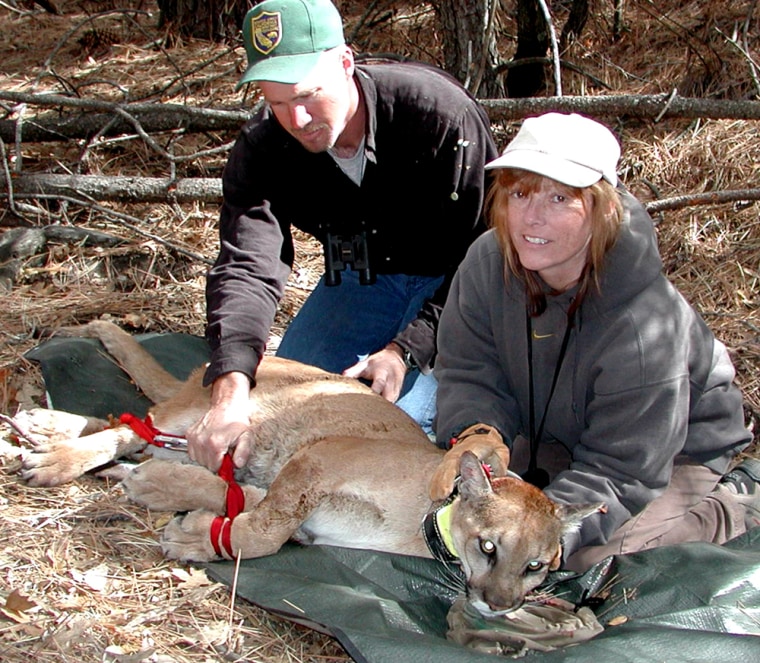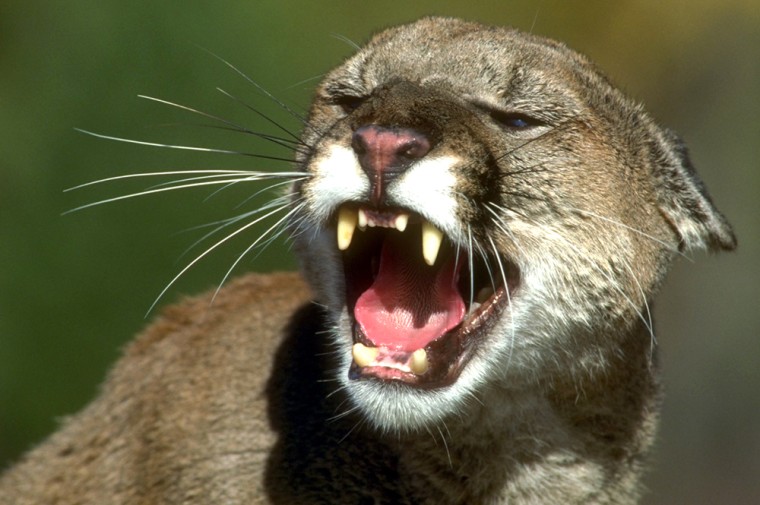New technology is giving scientists a window into the life of the mountain lion, a hunter so stealthy that the American Indians called it “the ghost of the Rockies.”
The results are surprising researchers — the big cats are not as leery of urban settings as had been thought, and they don’t necessarily develop an appetite for domestic livestock.
For the past three years, 20 lions in and around San Diego County’s Cuyamaca Rancho State Park were outfitted with $5,000 Global Positioning System collars that allowed researchers to trace their nocturnal travels.
The collars’ signals showed that mountain lions — also known as cougars or pumas — were crossing busy highways and just skirting clusters of homes.
“What surprised me the most is the degree of adaptability to what I consider to be high human activity in puma habitat,” said Ken Logan, one of the researchers on the study and the author of “Desert Puma,” which is based on a decade of research in New Mexico.
Humans and lions killed
The continuing $200,000-a-year study by the University of California, Davis, may provide a better understanding of why a predator that normally avoids people sometimes comes dangerously close.

In January, a lion killed cyclist Mark Reynolds in an Orange County park and then seriously injured a second cyclist a short time later. A scenic canyon outside Tucson, Ariz., was closed for part of March because pumas were repeatedly seen in broad daylight and apparently without their normal fear of humans.
The UC Davis researchers want to understand whether mountain lion behavior changes as they get used to people. It’s a question that’s key to the cougar’s survival in the fast-growing West. In California, even though a voter initiative outlawed trophy hunting of mountain lions, more than 700 have been killed over the past decade for threatening or harming people. From 1909 to 1963, more than 12,000 were hunted and killed in California.
“There might be ways with better understanding to know how to behave around lions to reduce the public safety incidents or lion attacks,” said Walter Boyce, director of the UC Davis Wildlife Health Center and lead researcher on the project.
Using trails, crossing highways
The study in Cuyamaca Rancho State Park, 35 miles east of San Diego, found that during the day, the GPS-collared lions typically slept at least a football field’s length away from the nearest trail and even farther from buildings.
After the sun set, however, the cats used the park’s extensive trail system and crept closer to buildings.
One 3-year-old male, dubbed M-2, crossed Interstate 8 and two other highways a total of 48 times during a six-month period in 2002. He ultimately was killed by a vehicle.
The GPS plot of the travels of a 2-year-old female called F-8 showed a clear orbit around — although never through — private properties in the rural eastern San Diego County community of Harrison Park.
A separate study of three pumas in the Santa Monica National Recreation Area outside Los Angeles found one ventured into a graffiti-covered underpass to cross a highway.
Advice to humans
The results of the UC Davis study are challenging some of the assumptions of state game wardens. Lt. Bob Turner, who has killed dozens of mountain lions over more than two decades with the California Department of Fish and Game, said he no longer believes that a cougar must be killed once it eats domestic animals.
F-8 was collared after she ate an alpaca, a small cousin of llamas, in a pen near the park. But after the alpaca breeder modified the fencing around her remaining livestock, the mountain lion returned to hunting deer.
“Close to 50 percent of the lions killed could be avoided if people could be responsible,” Turner said. “Most people are plain stupid.”
“We are not on the menu,” said Doug Updike, a biologist with the California Department of Fish and Game. “If a lion had any desire to catch and eat people, we would see literally hundreds of people dying every day.”
Background on UC Davis project is online at www.vetmed.ucdavis.edu/whc/scp/mnt_lion.htm
